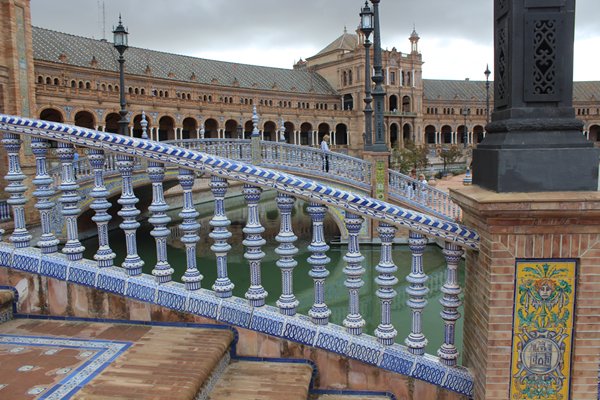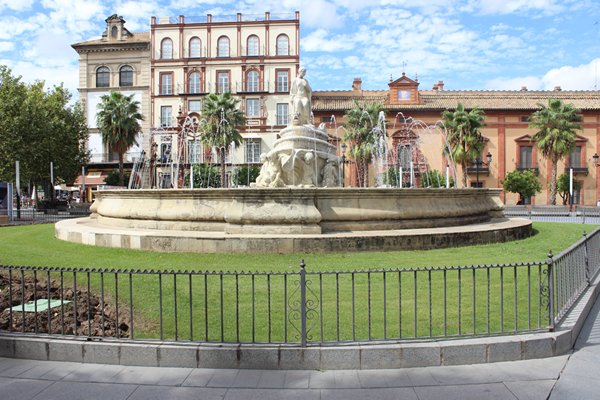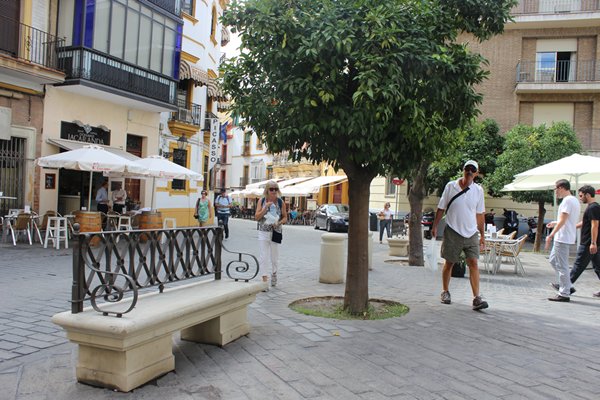Seville

|
Seville.
Seville is one of Spain’s best-loved cities. It has history, art and culture. Seville golden age was when it was the gateway to the Americas. By decree, it was the only Spanish city allowed to trade with the New World. Today, with the modern large vessels unable to travel up the river, the main trading port has become Cadiz. You can still travel up and down the River Guadalquivir from Seville to Cadiz. With only a day to sightsee we made our way to the famous Plaza de Espana and the Maria Luisa Park. This park is the largest in Seville and one of the most beautiful in Europe. Specifically for the 1929 Ibero American Exposition, the city of Seville hired the famous French landscape architect Nicolas Forestier to redesign the gardens, now named after Maria Luisa Fernanda.
The Plaza de España is one of the park’s most popular attractions and was the centerpiece of the expo. The architect was Anibal Gonzalez, from Seville, and it is a mixture of Art Deco and Mudejar. The Plaza has been used as the centre in several feature movies. There is a moat that has four bridges across it. The palace has two large towers and there are sections with benches with beautiful tile work (azulejos) that represent each of the provinces of Spain. In the center of the plaza is a very large and beautiful fountain. The Spanish like to be photographed at the benches of their provinces. The park has many orange trees, palm trees, elms, and Mediterranean pine trees. There are also many ponds and the people of Seville enjoy this park everyday.
Our next visit was to Real Alcazar the oldest European Royal residence and is not one building but group of buildings from different time periods and each building has its own architectural style. From the Moors to the Christian societies today you can visit the Mudejar Palace and the Gothic Palace by its side. The Mudejar Palace has the most beautiful patio, the Patio del Yeso with its reflecting pool and sunken gardens. It is surrounded by columns supporting Moorish arches. The pillars support a very decorative mesh of stucco. The tile work in the palace has some of the most beautiful tiles in Andalusia and the stuccowork on the walls is impressive. The Mudejar ceilings also call attention for their beauty and color. There is a three-tier gallery that is on the southern side. There is an impressive hall called the Chamber of Justice. The ceiling is made of wood and is very elaborate. There is elaborate stuccowork on the walls and the ceiling of the hall. On the floor is a small round fountain with a shallow channel that goes to the garden outside. The Monarchy of Spain still use it today and parts are cut off to visitors when they are in residence.
We now had just enough time to visit the Seville Cathedral and the Giralda Tower before it closed at 5pm. We were all hungry but, hey, this would be the last visit of the day.
Beside the
Cathedral is the Giralda Bell Tower. The symbol of Seville.
We entered
the magnificent cathedral from the bottom of the tower.
We now all
needed food! |












